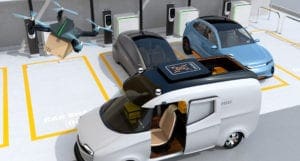
E-Commerce and the Changing Face of Retail: The Power of Flexible Design
An e-commerce revolution has rapidly increased delivery activity. Flexible Design provides the framework for anticipating disruptive trends & impacts.
Learn from award-winning professionals — explore our whitepapers, blogs, and the latest industry updates.
Join our dynamic organization of engineers, land surveyors, landscape architects, environmental scientists, and architects!
Talk to a market leader today! We’ll answer any questions you have about our professional services.

Once a tough sell, the appeal of properties around transit outpaces the construction of new rail and premium bus lines. The popularity of transit-oriented development (TOD) is a big success story helping communities realize transportation, economic development, and environmental goals simultaneously within a focused footprint.
However, as demand outstrips supply, TOD has become a luxury real estate product. Middle-income earners seeking housing and alternatives to car ownership can no longer afford location-efficient housing. Small businesses likewise face steep rents.
As cities struggle to find solutions to better link transportation and land use, technology covering all aspects of mobility is hitting sidewalks, streets, parking spaces, and smartphones. From shared scooters to on-demand rides to trip planning apps, travelers’ dependence on driving is shrinking. Travelers who do not live near transit stations have access to transit-like experiences.
This raises an important point. If new mobility mimics the experience of quality transit, can it also set the stage for a new type of transit-oriented development?
At WGI we decided to examine mobility hubs and technology from a more challenging frame. Florida, like other communities around the country, has its share of aging commercial corridors.
In 2012, WGI joined Greystar Real Estate Partners and BOKA Powell to transform the former Lamar Plaza in Austin, Texas into a mixed-use and multi-modal community. The site sits along a transit corridor with access to bikeways and the bordering corridor is one of the denser single-family neighborhoods within the city. One of the interesting redevelopment tasks was to keep and renovate the Alamo Drafthouse and Highball Nightclub; this development was only possible with a re-zoning to a specific category and overlay combination.
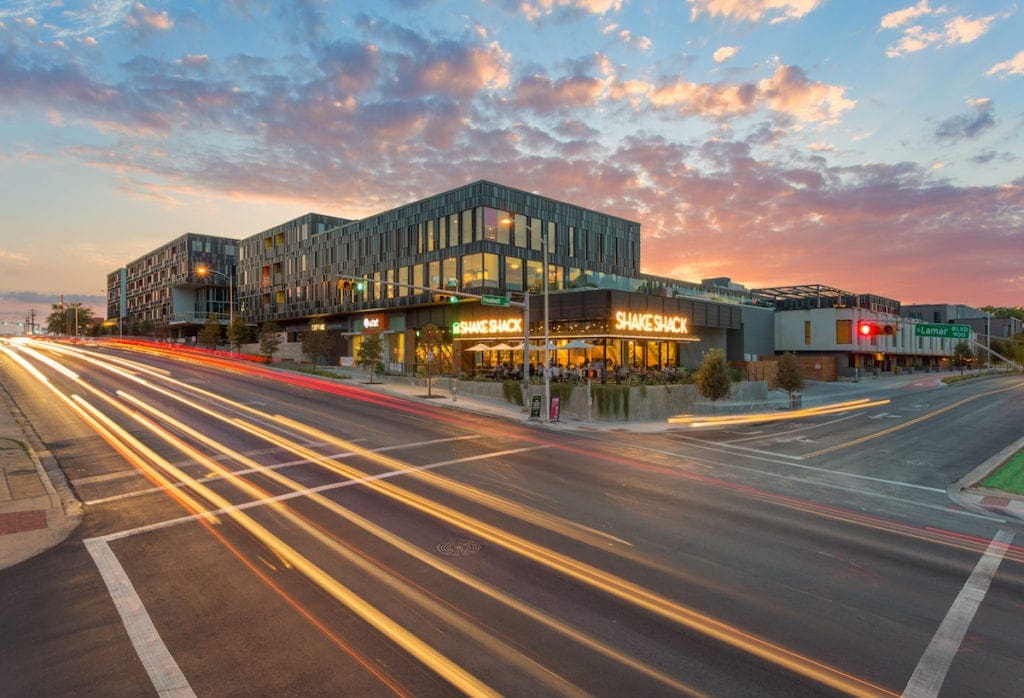
As the civil engineer, WGI was responsible for obtaining alternative compliance from zoning regulations in order to accommodate the Alamo Drafthouse theatre, significant off-site and on-site utility improvements, designing and permitting innovative rain gardens for water quality controls, and construction administration.
Additionally, WGI coordinated with the Transportation Team in Austin, TX on the design and construction of an innovative off-street bicycle path bordering Treadwell Street. The bicycle path is a protected facility that connects to and through the project with the adjacent neighborhood, which provides framework for future expansion of the bicycle network. This area is now a hot spot for new mobility alternatives, and with new development, the area’s transit agency has increased and improved service along this corridor which has consistently increased ridership over the past five years.
Given the fast rise in e-commerce, e-retailers have been on the front lines of reducing impacts related to deliveries. In 2011, Amazon introduced pick-up lockers, which can now be found in convenience stores, local groceries, apartment buildings, college campuses, and Whole Foods Markets.
Walmart launched Walmart Reimagined as a way of rethinking its conventional site plan with a “big box” building format fronted by a large parking lot. Instead, they are reframing underused parking as an asset that can form a destination. In this manner, customers who order goods online for pick up have a reason to linger in restaurants and events spaces.
This concept creates a new hub that allows Walmart’s brick and mortar stores to not only compete with Walmart’s online services but expand into new lines of revenue and convenience for customers.

While WGI works with communities served by premium transit and transit-oriented development, we are intrigued by the promise of new mobility to bring more transit options to more areas. And with these options, could we also see a new generation of mobility-oriented development?
A majority of real estate developers have voiced a preference for more sites next to transit on fixed guideways with frequent service. This means an increase in subways, light-rail, streetcars, and bus rapid transit in dedicated lanes. However, cities are also revamping bus service networks and installing new transit-only “red lanes” during rush hours. Minneapolis is building small mobility hubs at bus stops that host bike and scooter share parking.
Taking it to the next level, what would mobility-oriented development include? First, cities are trying to meet a multitude of goals in addition to multi-modal transportation. Moreover, technology is touching almost every aspect of design, including construction, utilities, and infrastructure. Mobility hubs offer the ability to solve multiple goals and take advantage of multiple technologies across sectors.
Second, we see promise for redeveloping aging commercial corridors that are common throughout the country. These retail centers are at the heart of a paradox where communities face both a housing affordability crisis, and unrealized value as technology continues to alter the dynamics of commercial real estate.
Redevelopment is not easy for several reasons. Zoning codes often dictate a strict separation of uses, resulting in few residents are able to live close to a bus stop along the corridor. In turn, auto travel dominates the design for streets, intersections, and parking making walking and biking unattractive and unsafe.
In regards of hub design, here are just a few factors we designed into this mobility hub example:
Areawide: Since hubs work by aggregating mobility options, hubs should be in areas with connectivity and supporting infrastructure. Transit hubs can be located on a bus line or allow travelers to feed easily to premium transit lines that are a little longer than a typical walk, but accessible by bike, e-scooter, or microtransit. Hubs also do not necessarily need to have all modes available to them; combining any two of the previously mentioned transportation opportunities allows individuals to make choices that work for them.
Feeder hubs should also be viewed as opportunities for affordability whether it’s for transportation, housing, or small business.
Building: Construction technology is helping reduce costs with modular and simplified construction. For mobility hubs, modular construction allows a builder to test and phase in development to meet the market. Modular designs can also be readily reconfigured for changing the size and use of units. With this flexibility, planners will want to make sure zoning codes allow this flexibility, which may include new codes for adaptable design districts.
In our mobility hub, we leave spacing between the phased additions. This lets in light and facilitates drone deliveries to individual balconies which reduce a property manager’s resources needed to accept and store packages and food deliveries. Whether aerial drones in urban areas are suitable is not yet established, however, this configuration would work where a truck can still launch deliveries from a loading dock or a curbside.

Building design is also evolving to include mobility rooms. In Portland, apartments often have repair stations and bike racks conveniently located on the first floor adjacent to streets with bicycle lanes or paths. This allows “grab and go” mobility that’s as convenient (if not more) than a car.
Infrastructure: Mobility hub design will focus on transit, shared-use mobility, and active transportation. Reading the illustration left to right, the shared-use curb shows new features:

With so much attention to new mobility, it’s important to note that land use, transportation, and infrastructure are still linked – with and without drivers in vehicles. By carefully harnessing new technologies in combination with the timeless appeal of great placemaking, these new hubs can expand the number of people living and working next to transit.
Contact Dan Hennessy or Lisa Nisenson for more information on integrating new mobility services into your next plan updates: (1) Transportation and Transit, (2) Corridor, (3) Comprehensive Plans, (4) Mixed-use development, and (5) Transit-Oriented Development plans.

WGI is a national design and professional services firm leading in technology-based solutions for the construction of public infrastructure and real estate development. At WGI, we’re providing Tomorrow’s Infrastructure Solutions Today.

An e-commerce revolution has rapidly increased delivery activity. Flexible Design provides the framework for anticipating disruptive trends & impacts.
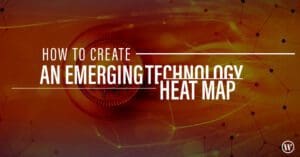
A rapid assessment tool that helps uncover the emerging technologies and trends that are of strategic importance to your business.

Two WGI projects have been chosen by ACEC to receive National Recognition Awards & are in the running for the Grand Conceptor Award at the 2022 Engineering Excellence Awards Gala.
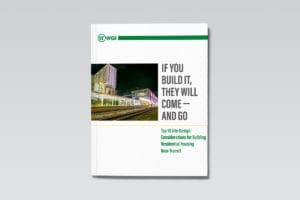
Don’t let your next TOD project flop. WGI has the top 10 site-design considerations for building residential housing near transit and the expert team to ensure your TOD project is a success!

Creativity is required to serve the “Tenant of Tomorrow” as their needs will likely change as more employees work from home, at least part of the time.
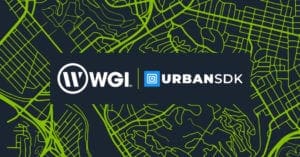
Together, WGI and Urban SDK offer clients the ability to enhance safety, improve mobility, and realize cost savings – using data analytics combined with WGI’s robust infrastructure capabilities.
You’ve been searching for a place like WGI. We look forward to meeting you soon.
Sign up to receive emails to hear our latest news and achievements in our monthly newsletter.
Enter your zip code, and we’ll personalize your experience with local projects, office locations, team members, and more.
WGI supports its associates with meaningful opportunities for growth, strong benefits and perks, while we work collaboratively with clients and co-consultants to shape and improve communities.






WGI is a dynamic organization with opportunities nationwide for engineers, land surveyors, landscape architects, environmental scientists, and architects.